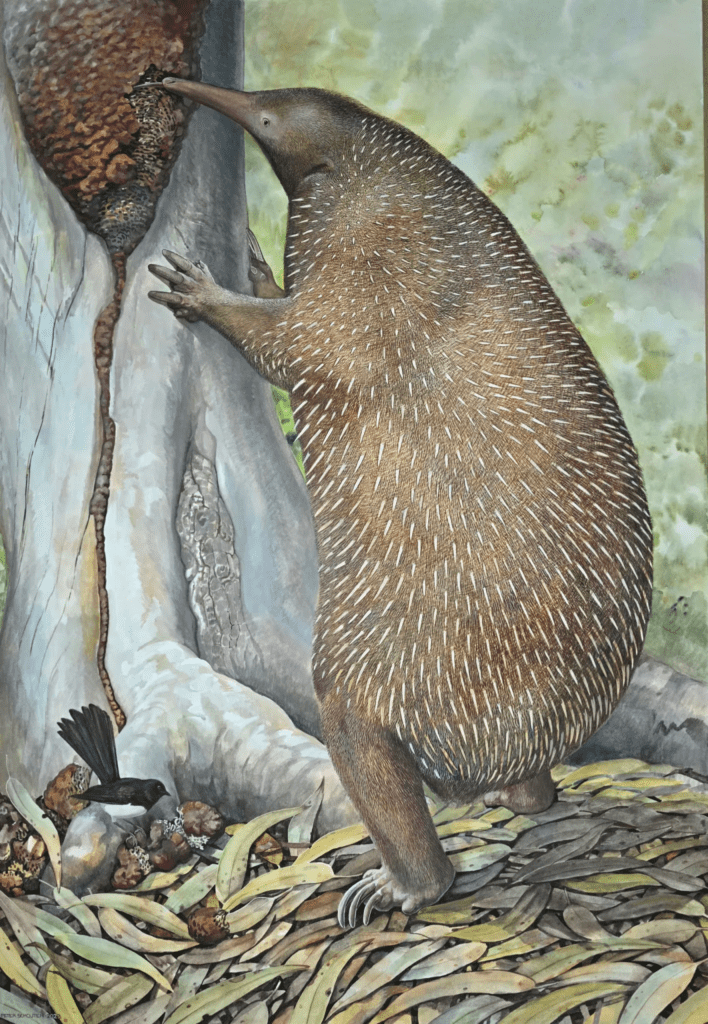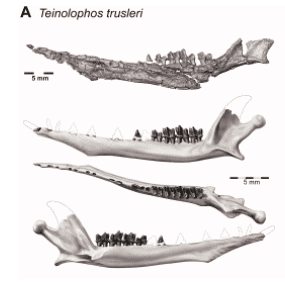
Mammals like no others
The platypus and echidna are the only surviving monotremes — a group of mammals that lays eggs. If you’re thinking that mammals give live birth and don’t lay eggs, well, these two groups are the exception. But it gets even weirder: both groups have a beak, the platypus has a venomous spur and 5 pairs of sex chromosomes, while the echidna has a four-headed penis. For centuries, everything about these mammals has baffled scientists but now, we’re starting to get a better idea of where these animals came from.
A group of researchers took advantage of the pandemic lockdowns to take a deeper look at all the existing fossil evidence regarding monotremes. In particular, they zoomed in on a small fossil (the oldest and smallest known monotreme fossil), as well as the largest egg-laying mammal — a giant, extinct, tree-climbing echidna.
The small fossil is essentially a jawbone found in Victoria, Australia; three other partial jawbones were found in the same area, and they point to tiny monotremes weighing no more than 40 grams (1.4 ounces). These small creatures lived 130 million years ago, during a time called the Early Cretaceous when dinosaurs still roamed the land.
During this period, the climate was warmer and more humid than today. The polar regions were free of large ice sheets and were instead covered by cold forests. Even with its long winter night, Antarctica hosted rich biodiversity, including dinosaurs — and the tiny monotreme.

The small, now-extinct creature was named Teinolophos trusleri and is believed to be either the ancestor of all modern monotremes or very close to it. Researchers believed it would have used its beak-like appendage to prod beneath the snow for prey. The fossilized jaw has a noticeable canal running through it that researchers believe carried nerves and tissue required for electroreception — the ability of some animals to detect weak electric fields in the environment. The beak appendage would have therefore been electrosensitive and would have been apt at detecting signs of even smaller creatures trying to hide beneath the snow. This extraordinary sensory ability still survives to this day in modern monotremes.
The researchers also looked at the largest egg-laying mammal that we know of — an echidna for which the researchers described a new genus (Murrayglossus). The echidna weighed around 30 kilograms (66 pounds), eight times more than short-beaked echidnas in Australia, and around five times more than the long-beaked echidnas in New Guinea.

A bridge to Australia
The Earth’s surface is not a static place — it may seem that way to us, but if we look at things in geological time (millions of years), the surface of the Earth has changed quite a bit as the tectonic plates moved around. At one point in its history (a “point” that also lasted millions of years), the Earth’s landmass was concentrated in two supercontinents: Laurasia and Gondwana. Among other places, Gondwana contained India, Madagascar, Antarctica, and New Guinea.
At some point, most likely 50 million years ago, some of the ancestors of monotremes got isolated on an island that eventually formed a part of New Guinea. Finding themselves isolated and forced to adapt to the environment, these platypus-like creatures evolved; there wasn’t a lot of river habitat that is excellent for a platypus, but there were lots of wet forests, so they switched to a more terrestrial way of life — and became echidnas. So in other words, the first echidnas were platypus-like.

But this still doesn’t explain how echidnas also reached Australia. To answer that question, we have to move much closer to the present day. Time and time again in the past million years, New Guinea has been physically connected to the Australian continent. Ten thousand years ago, you would have probably been able to walk between the two — and some echidnas very likely did so.
It’s striking that through fossils alone, researchers can track the evolution of this unique animal group so well. This comprehensive story of how monotremes came to be and moved around is a testament to just how much we can learn from the fossil record. But there’s undoubtedly much more still to be discovered from their story. For instance, we also just recently learned that a giant carnivorous platypus with teeth once roamed Australia — who knows what else is just waiting to be discovered?
The study was published in Alcheringa: An Australasian Journal of Palaeontology.






